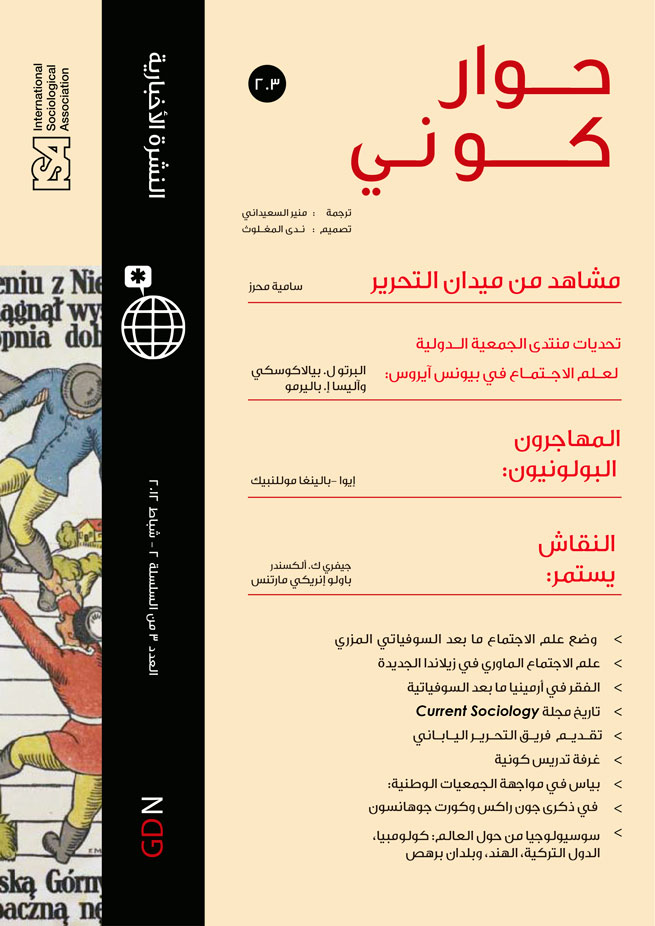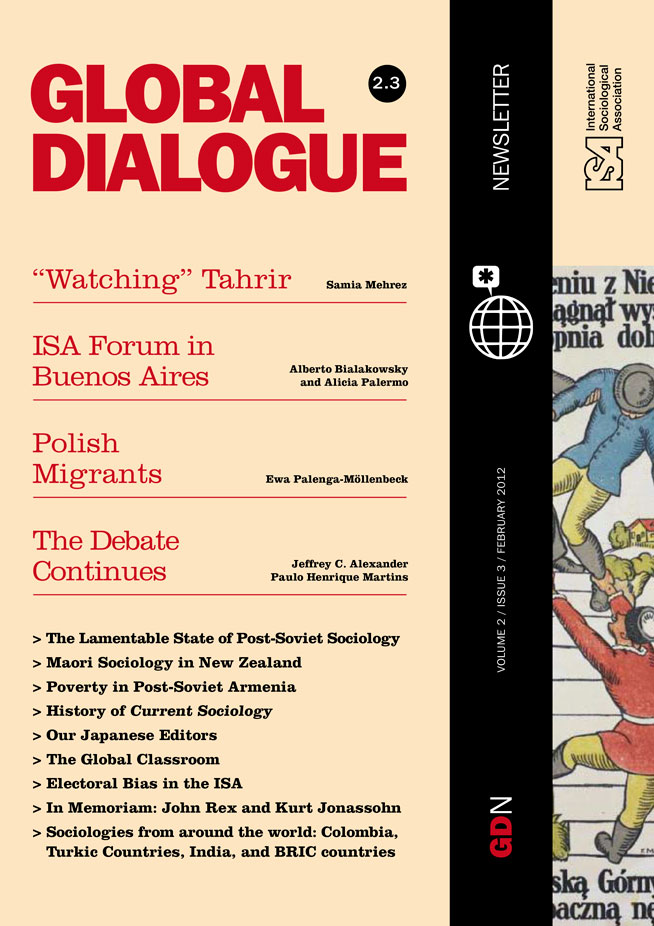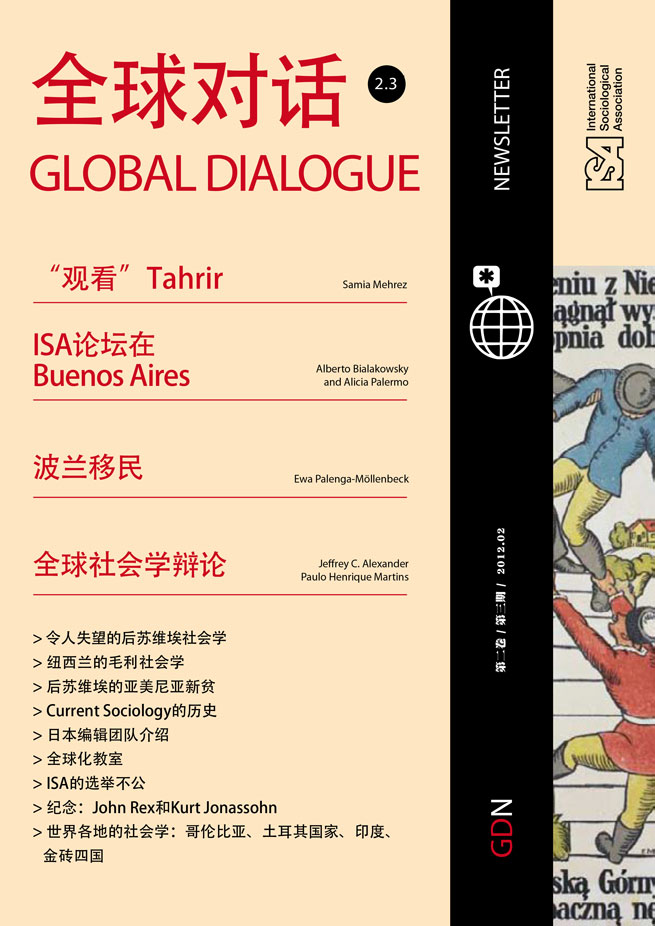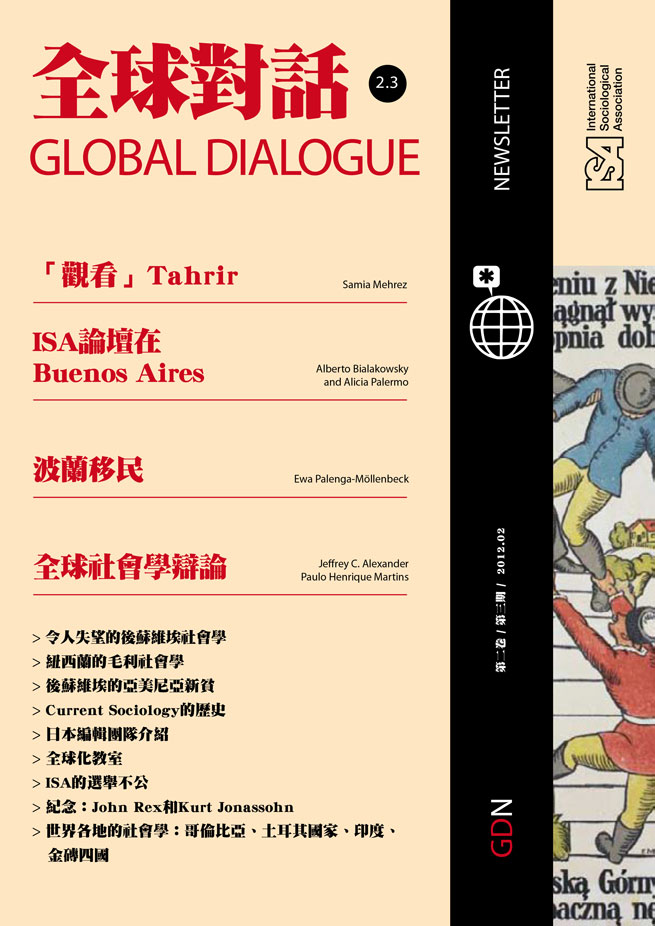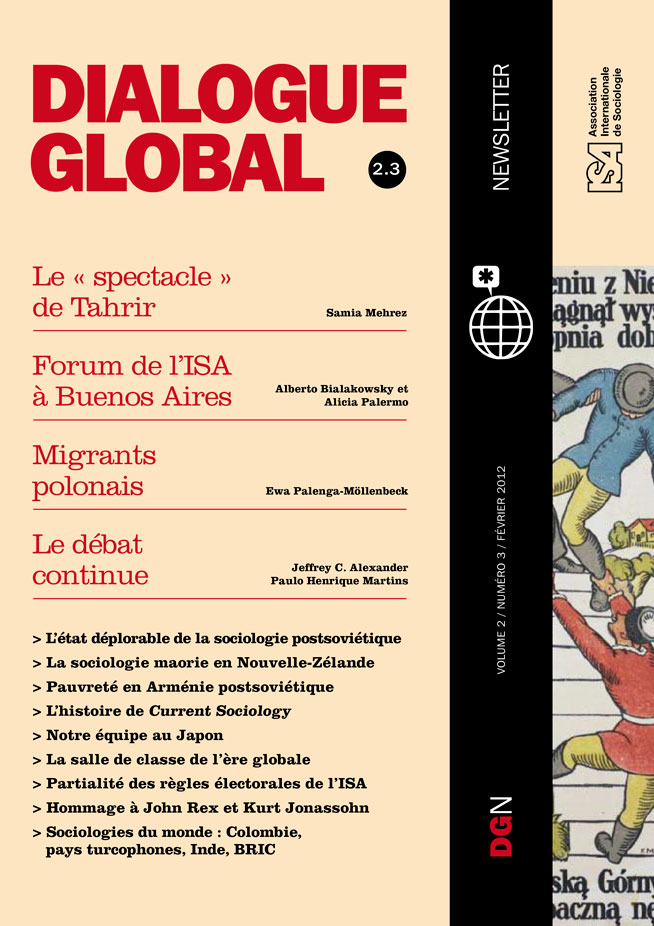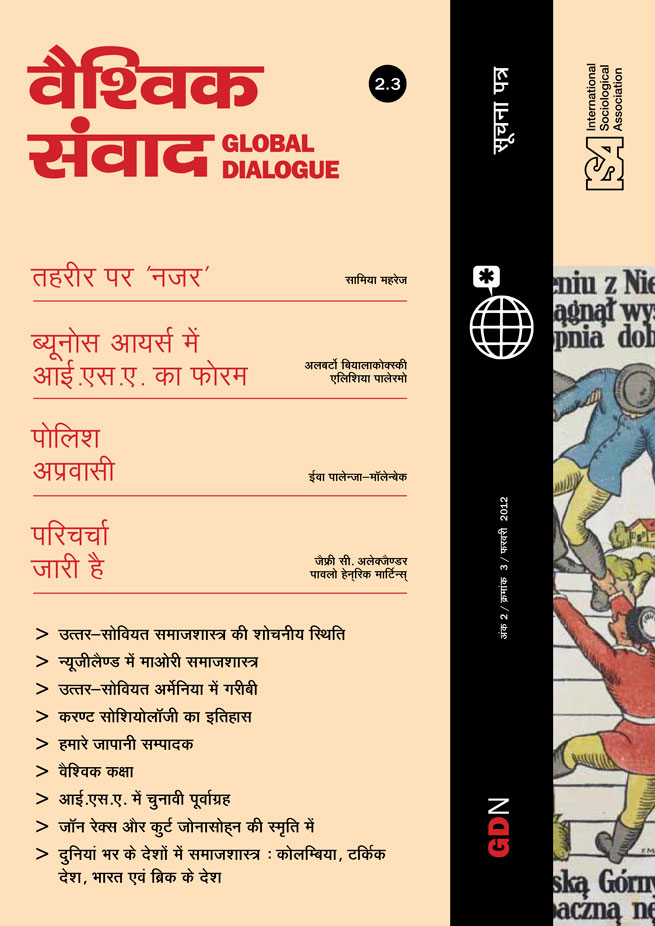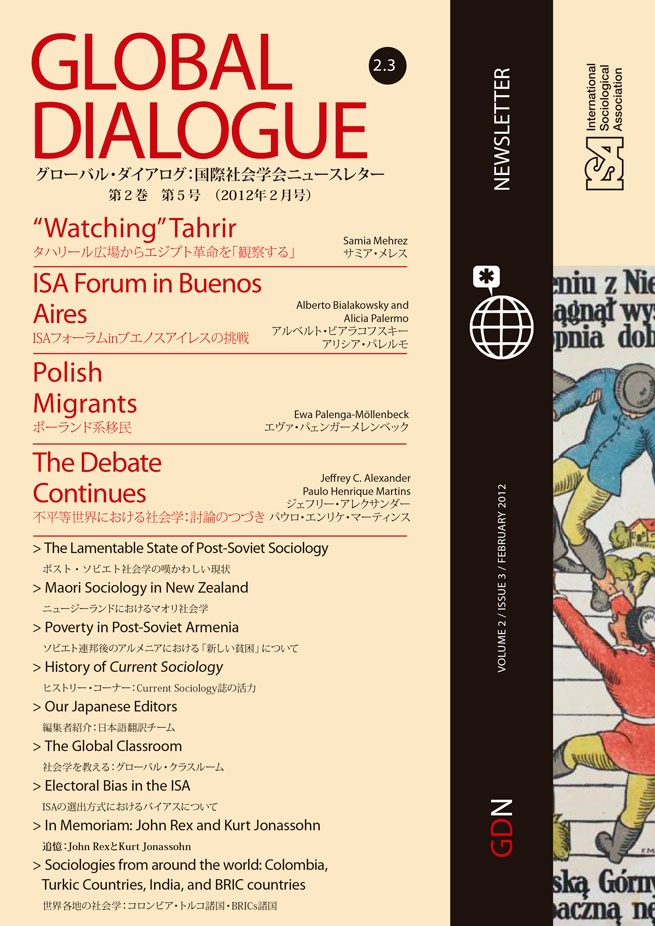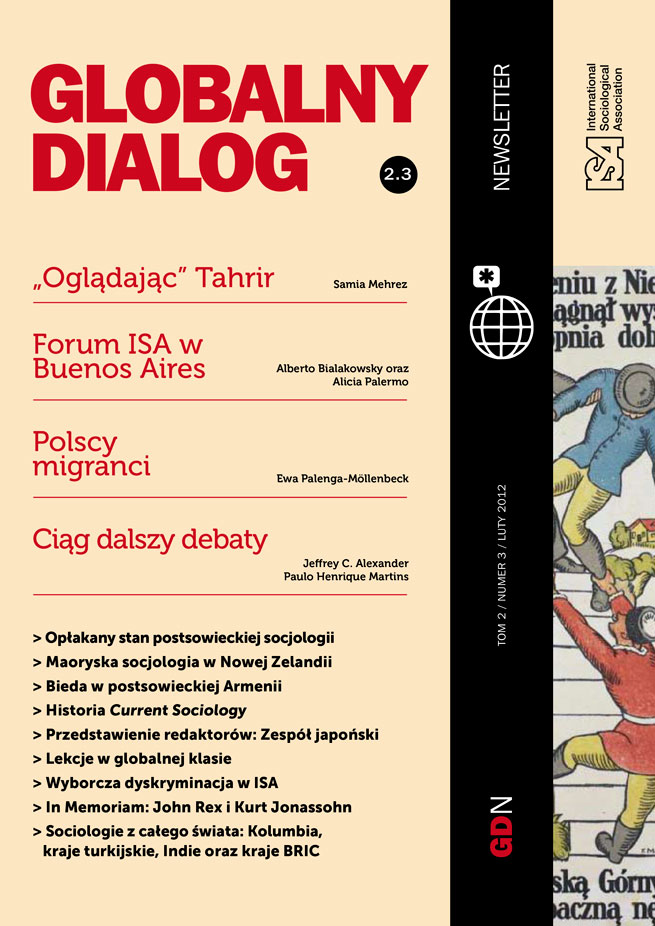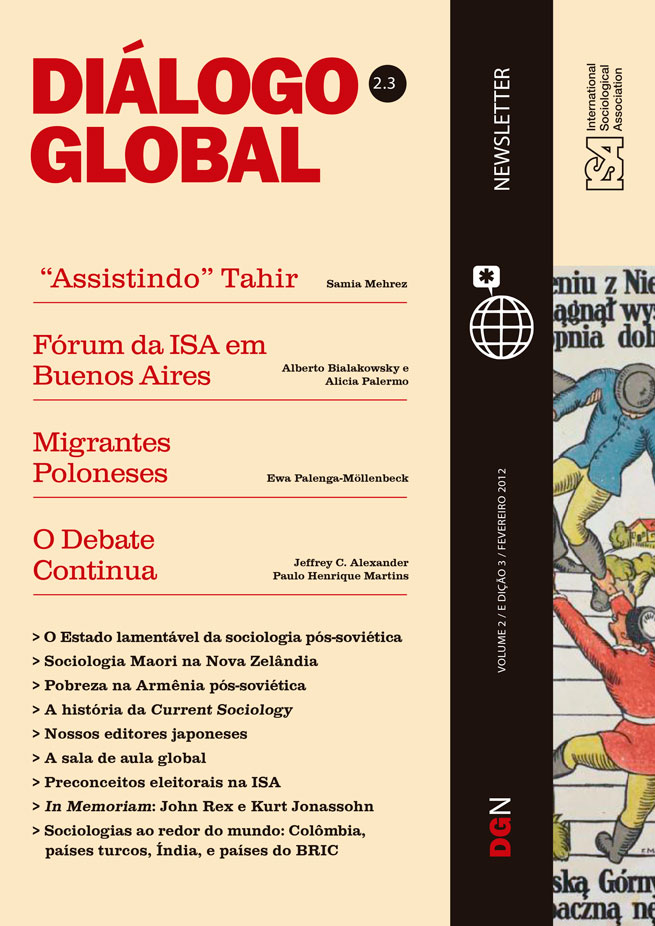Read more about Transnational Translations
Challenges of the ISA Forum in Buenos Aires: Fighting an Unequal World with an Equal Sociology
by Alberto L. Bialakowsky and Alicia I. Palermo

“Watching” Tahrir
by Samia Mehrez
March 01, 2012
Since the 1990s, a new approach has been gaining ground in migration studies. While the classical paradigm saw migration as a once-in-a-lifetime event that would ultimately lead to assimilation into the receiving society, or to a permanent return, research into “transnational” migration highlights how migrants can maintain ties in more than one national society. This approach was developed on the basis of the North American experience, but similar phenomena may be found in Europe. One such case is short-term migration from Upper Silesia in what is now Poland, but before World War II used to be a Polish-German borderland that often defied national policies.
Due to the ius sanguinis principle underlying German citizenship law, many inhabitants of this region are entitled to German citizenship, regardless of whether they have any social or cultural ties with Germany, and without needing to give up their Polish nationality. Since the 1990s, dual citizens have used this loophole to gain access to the German labor market, which otherwise remained closed to Polish citizens until 2011. While many Silesians settled permanently in Germany, hundreds of thousands of them preferred to keep a permanent residence in Poland and commute to German jobs. In this way they could achieve a standard of living that would be beyond their means if they relied on the Polish labor market.
The case of Silesian dual citizens shows that having legal privileges does not automatically render them “transnational.” The majority has permanently adapted to a mobile lifestyle, but that does not mean they are transmigrants in the narrow sense as “people with feet in two societies.” Just as often we observe another type of migrant who, although permanently mobile, retains exclusive social ties to their society of origin. This is somewhat surprising. After all, at first sight, such migrants might be expected to become transmigrants due to their cultural heritage (bilingualism, migration as tradition, etc.), their legal privileges (dual citizenship), and, finally, their employment in a migration-related industry (transnationally operating companies, service providers, etc.).
However, reality turns out to be more complex. On the one hand, being dual citizens, those migrants have more employment opportunities than they can choose from – they may work full-time or part-time in Germany as well as obtain a pension, a permanent job, or training in Poland. This gives them a scope of action and career planning approaching that of “assimilated” non-migrants in Germany. On the other hand, it is precisely the high degree of security in Poland that encourages constant migration and discourages their assimilation into the receiving society. Thus, they end up on one end of a continuum, the other end of which is occupied by illegal migrants who are forced to assimilate to escape arrest and deportation. Their lack of language skills and knowledge of German society makes these “legally German” citizens completely dependent on their respective sending companies. As a manager of a group of migrants put it: “They know they have someone who looks after them […] They want to work, make money, and that’s it. […] They feel if they have a red [German] passport, that’s all they need, and they just need to make money and that’s it.”
The dual citizens just described are more similar to the easily exploited 1950s guest workers than to resourceful actors that negotiate the demands of two national societies with equal ease. Still, such resourceful actors do exist among Silesian migrants – they have the necessary language skills and cultural capital, professional qualifications, and social capital that allow them to easily switch national job markets. The reasons that make some migrants resourceful actors in the receiving society while others remain dependent “guest workers” are complex and cannot be discussed in detail here. One factor that could be singled out as favoring the “guest-worker lifestyle” is the existence of a transnational migration industry that offers many employment opportunities and encourages mobility, but at the same time takes the migrants’ lives very much out of their own hands, thus limiting both the opportunities and necessity to directly interact with the receiving society.
The rise of such a migration industry goes hand in hand with an important development that can be observed in all industrialized countries: the decline of the “standard employment relationship” and its replacement with atypical, precarious employment. Thus, part-time, short-term jobs dominate among Silesian migrants, who often combine them with other precarious jobs, education or even permanent employment in Poland. As with all large-scale societal developments, it is difficult to identify cause and effect, winners and losers. On the one hand, precarious work in Germany encourages this type of migration or makes it feasible in the first place. In turn, it further contributes to the ongoing precariousness of the migrants’ lives. On the other hand, this process is much more advanced in Poland, where the switch from a planned to a “post-industrial” economy was almost instantaneous, with an impact on the labor market that made short-term migration appear attractive or even inevitable. Thus, we see that in today’s world, migration takes on many surprising and fascinating patterns that defy the old models of assimilation.
Ewa Palenga-Möllenbeck, University of Frankfurt, Germany
This issue is not available yet in this language.
Request to be notified when the issue is available in your language.
If you prefer, you can access previous issues available in your language:
